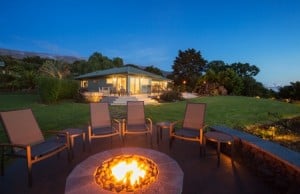Seven Essentials for Buying a Safe Home

Buyers can be distracted by strategic staging, clever decor, and time pressures. They benefit from stepping back to determine whether the home they’re considering will require expensive additions or overhauls to keep everyone safe—not just this summer, but every day of the year.
The more buyers ask from sellers, the greater the need for careful examination!
Seven Safety Essentials for Home Buyers
As well as any safety concerns specific to your family, there are seven main issues that should be top of mind for buyers of houses, townhomes, or condominiums:
1. Contained Pool Fun: Pools come in all shapes, sizes, and types. One safety issue remains important: controlling who enters the pool and when. This involves safety measures for small children and across generations, as well as for visitors who are non-swimmers or uncomfortable around water.
Pool fencing that complies with local bylaws is essential. Looks matter, but locks are vital. Ask for installation details and check those against local safety requirements.
Life Saver Pool Fence relates its product designs directly to the importance and expense of transforming pools into safe playgrounds. Their pool fences can be “removed and reinstalled by the homeowner as one of the best investments a seller can make, especially with family homes.” This US company reports they use “triple-reinforced solid poles, self-latching gates, rounded edges and the strongest UV resistant mesh available in stylish colors.” This reality means buyers should not assume the pool fence is included.
2. Backyard Fire Zones: Landscaping and patio designs are usually customized to suit the specific needs of those paying for these expensive features—the homeowners. Buyers are, therefore, buying someone else’s decisions about what works, what doesn’t, what’s safe for family and what’s not. The cost of “making over” a backyard, fire-pit area, outdoor kitchen, BBQ corner, or other common cooking, smoking, or outdoor-fire feature can be significant. Changes that are decor- or taste-driven are not the issue. If buyers’ will be introducing small children and pets into areas designed for adults-only use, modifications may be essential. Fire and play zones do not mix!
3. Aging Danger Zones: Established gardens, patios, pool areas, decks, fences, and playgrounds look wonderful. Realistically, at some point “established” changes to “worn out.” Buyers shouldn’t just peek out windows at the yard or view the garden from the patio doors or deck. Get out there and stomp around — gently. Not enough to destroy the yard, just enough to ensure constructed elements are sound. Deck railings and fences rot out from the bottom. This means looking great does not guarantee they are strong, stable, and secure.
4. Landscaping Liabilities: Trees are amazing and valuable. As part of their life cycle, mature trees may need periodic pruning to safely remove dying and dead branches before they become falling hazzards. When considering properties with large trees, buyers benefit from talking to arborists to learn about the approximate costs of maintenance programs they are buying into. The legal issues involving trees are almost as complex and varied as those for fences.
5. Inside and Out: Make sure equipment or structures included in the purchase price have genuine value. Home Inspections may include evaluations of major equipment like owned furnaces, water heaters, and even major appliances. Sometimes, outdoor equipment and structures, even for pools, are overlooked. If buyers don’t feel confident about verifying the condition of outdoor equipment or structures themselves, specialists may be required.
When buyers, in their offer, specifically request items such as gas-fueled appliances, caution should be exercised. Buyers should confirm that equipment they ask for is in good condition and, where appropriate, professionally installed to maintain its functionality and safety.
6. Multi-storey Perspectives: London England’s shocking high-rise fire shone a bright, terrible spotlight on fire-safety design, maintenance, and unit security around the world. Buyers interested in a high-rise or multi-unit facility should ask their real estate professional to provide documentation concerning these issues for the building or buildings being considered. Local fire authorities can contribute significant fire safety knowledge.
“If you live in a high-rise or work in a high-rise building, be familiar with the occupancy,” Houston Texas Fire Samuel Peña stressed. “Be familiar with the life-safety systems [and] know where the means of egress [exit] are. Know what your responsibility is in case of an emergency.”
Chief Peña emphasizes “four simple safety tips [which] could mean the difference between life and death in case you’re involved in a high-rise fire.” Long before fire strikes, Chief Peña strongly advises those living in multi-storey buildings to learn the local Fire Code, how and when to evacuate, where safe places are, and where all the building exits and stairwells are located.
7. Curbing Danger: Even busy or high-accident streets are periodically quiet streets. Buyers do not spend hours or days viewing a home before they buy. During their brief visit, buyers may not experience any traffic or noise concerns. That’s why real estate professionals are so valuable—but only if buyers express their personal uneasiness and ask direct questions about safety, noise, and anything and everything that is of concern to them.
For a perspective on local road safety that can also help buyers evaluate danger in an area they are not familiar with, revisit my column Do No Harm’ Driving Long Over Due”
These Seven Safety Essentials should be top of mind for buyers determined to find a safe home. How long is your safety list when home shopping?
A Safe, Fun Summer to you all!
Source: realtytimes.com















 Accessibility
Accessibility